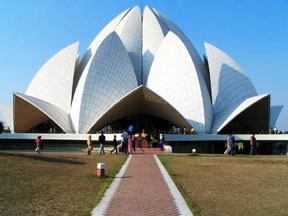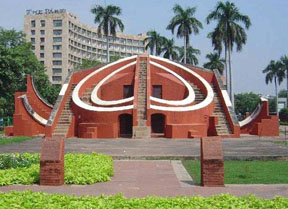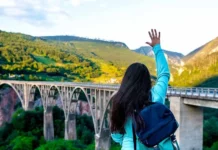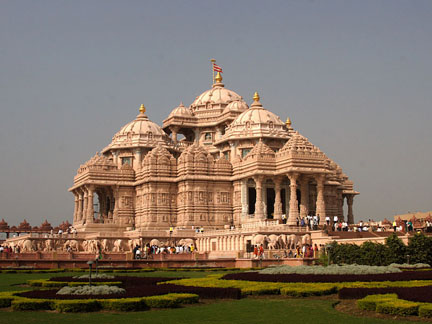 Seat of power for about a millennium
Seat of power for about a millennium
Delhi is a city that bridges two different worlds. Old Delhi, once the capital of Islamic India, is a labyrinth of narrow lanes lined with crumbling havelis and formidable mosques. In contrast, the imperial city of New Delhi created by the British Raj comprises spacious, tree-lined avenues and imposing government buildings.
Delhi has been the seat of power for several rulers and many empires for about a millennium. Many a times the city was built, destroyed and then rebuilt here. Interestingly, a number of Delhi’s rulers played a dual role, first as destroyers and then as creators.
The city’s importance lies not just in its past glory as the seat of empires and magnificent monuments, but also in the rich and diverse cultures. No wonder chroniclers of Delhi culture – from Chand Bardai and Amir Khusro to present days writers – have never been at a loss for topics.
In Delhi, you will discover that the city is sprinkled with dazzling gems: captivating ancient monuments, fascinating museums and art galleries, architectural wonders, a vivacious performing-arts scene, fabulous eating places and bustling markets.
Delhi has been the political hub of India. Every political activity in the country traces its roots here. This was true even of the mythological era. The Pandavas of the Mahabharata had their capital at Indraprastha, which is believed to have been geographically located in today’s Delhi.
Delhi, the capital of India has a strong historical background. It was ruled by some of the most powerful emperors in Indian history.
The history of the city is as old as the epic Mahabharata. The town was known as Indraprastha, where Pandavas used to live. In due course eight more cities came alive adjacent to Indraprastha: Lal Kot, Siri, Dinpanah, Quila Rai Pithora, Ferozabad, Jahanpanah, Tughlakabad and Shahjahanabad.
Delhi has been a witness to the political turmoil for over five centuries. It was ruled by the Mughals in succession to Khiljis and Tughlaqs.
In 1192 the legions of the Afghan warrior Muhammad of Ghori captured the Rajput town and the Delhi Sultanate was established (1206). The invasion of Delhi by Timur in 1398 put an end to the sultanate; the Lodis, last of the Delhi sultans, gave way to Babur, who, after the battle of Panipat in 1526, founded the Mughal Empire. The early Mughal emperors favored Agra as their capital, and Delhi became their permanent seat only after Shah Jahan built (1638) the walls of Old Delhi.
From Hindu Kings to Muslim Sultans, the reins of the city kept shifting from one ruler to another. The soils of the city smell of blood, sacrifices and love for the nation. The old ‘Havelis’ and edifices from the past stand silent but their silence also speaks volumes for their owners and people who lived here centuries back.
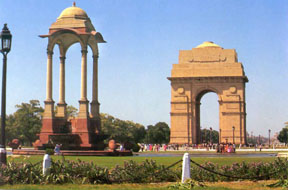 In the year 1803 AD, the city came under British rule. In 1911, British shifted their capital from Calcutta to Delhi. It again became the center of all the governing activities. But, the city has the reputation of overthrowing the occupants of its throne. It included the British and the current political parties that have had the honor of leading free India.
In the year 1803 AD, the city came under British rule. In 1911, British shifted their capital from Calcutta to Delhi. It again became the center of all the governing activities. But, the city has the reputation of overthrowing the occupants of its throne. It included the British and the current political parties that have had the honor of leading free India.
After independence in 1947, New Delhi was officially declared as the Capital of India.
Culture of Delhi
Delhi is the traditional and present day capital of India. Delhi stands in a triangle formed by the river Yamuna in the east and spurs from the Aravali range in the west and south.
Delhi is not only the largest commercial centre in Northern India but also the largest centre of small industries. The IT sector, handloom, fashion, textile and electronic industry contribute a lot to Delhi’s economy.
Delhi is bounded by four states namely Haryana, Rajasthan, Uttar Pradesh and Punjab that have a strong influence on the lifestyle of Delhi. Delhi is a cosmopolitan city where people are open to embracing new ideas and lifestyle. People from all parts of the country live here. All major festival of India are celebrated and the Unity in Diversity is evident in social and cultural gatherings. Be it Holi, Diwali, Id, Guru Purab, Buddha Purnima or Christmas, you will find the same vigor and bliss among people from different communities.
Tourist Places
Akshardham Temple, Azad Hind Gram, Bahai Temple, Birla Mandir, Dilli Haat, Garden of Five Senses, Humayun’s Tomb, India Gate, Jama Masjid, Jantar Mantar, Lodi Tomb, Parliament House, Purana Quila, Qutab Minar, Safdarjang Tomb, Red Fort.
Best Time to Visit
The best time to visit Delhi is from October to March when the weather is at its best. During this period flowers are at their blooming best, the weather is pleasant and enjoyable to experience Incredible Delhi.
By Air
Delhi is well connected with domestic and international flights, to all the major cities within and outside India. Almost all the major airlines have their flights operating from Indira Gandhi International Airport at New Delhi. Domestic Airport connects Delhi to the major cities in India.
By Train
The railway network connects Delhi to the all major and, nearly, all the minor destinations in India. The three important railway stations of Delhi are New Delhi Railway Station, Old Delhi Railway Station and Hazrat Nizamuddin Railway Station.
By Road
Delhi is well connected, by a network of roads and national highways, with all the major cities in India. The three major bus stands in Delhi are Inter State Bus Terminus (ISBT) at Kashmiri Gate, Sarai Kale-Khan Bus Terminus and Anand Vihar Bus Terminus. Both the government and private transport providers provide frequent bus services. One can also get government as well as private taxis here.

